Jupiter is the largest planet in our solar system, so there’s something appropriate about the fact that it is named for the king of the Roman gods. How did Jupiter get its name, though? Did the first people who called it that realize how big it was? If not, was it a pure coincidence that they chose the name of a chief god for the largest planet? We’ll explore these questions and learn other interesting facts about the solar system’s largest planet in this article.

Jupiter’s Great Red Spot is a 10,000-mile diameter storm that has been going strong for at least 350 years.
©joshimerbin/Shutterstock.com
Who Discovered Jupiter?
Jupiter doesn’t just have one discoverer. Since it can be seen as a bright point of light in the sky, it has been known and observed since ancient times. For example, observations of Jupiter were recorded in Babylon in the 600s BC. Astrologers in China, Persia, Latin America, and many other cultures kept careful records of the movements of stars, believing they could predict the future. They mistook the planets for stars but noticed something strange about their motion. Unlike other stars, which followed a regular path across the sky, “wandering stars” like Jupiter would, after a while, appear to reverse course in the sky and go back in the direction they came. We now know this is because the orbits of the planets are different sizes, so the Earth overtakes them at different points of its orbit. But for ancient people, Jupiter and the other visible planets seemed to move through the constellations of the zodiac, and they attached mystical meanings to this.
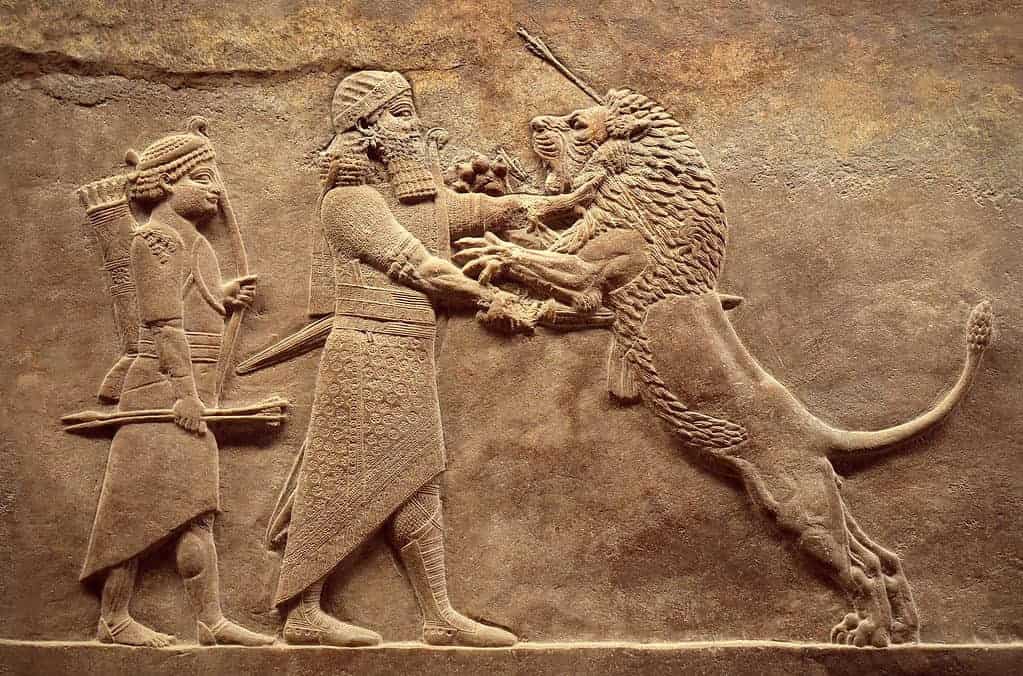
The ancient Babylonians were some of the earliest astronomers to leave behind records of their observations of Jupiter in the night sky.
©Viacheslav Lopatin/Shutterstock.com
How Was Jupiter Named?
All of the planets from Mercury to Saturn were named different things in different cultures that were significant to them and their mythology. The names we use for the planets today originated in Greece, as they named the planets after different significant gods. When the Romans came in contact with Greece and began adopting many of its cultural practices, they changed the names to the equivalent names of their gods. Since the Greeks called the largest planet Zeus, the chief of their gods, the Romans referred to it by the equivalent name of their chief god who went by the names Jove, Iuppiter, Iovis, or Diespiter.
The name Iuppiter was anglicized by the British to Jupiter, and that is how it is now known in the English-speaking world. It’s interesting to note, though, that the Greeks and Romans would not have known that Jupiter is the largest planet, as they could only see it as a point of light like a star. Venus is actually much brighter. However, Jupiter takes 12 years to complete an orbit of the Sun, meaning it spends one year in each constellation of the Zodiac. This is likely the reason ancient people thought it was a special star that ruled over the sky.
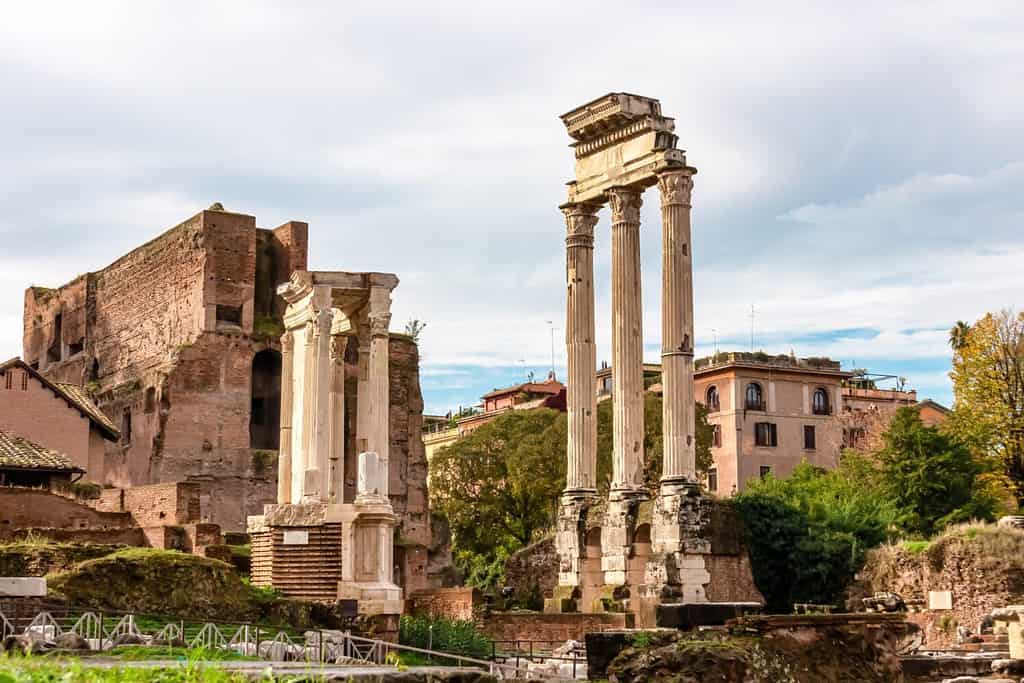
The Romans followed the Greeks by naming Jupiter after the ruler of the gods.
©Christopher Moswitzer/Shutterstock.com
What Did Jupiter Do in Mythology?
Jupiter was the Roman god of the sky, lightning, and thunder. They believed any place that had been struck by lightning was his property. Romans worshipped him on hills and high places. The most important temple in Rome was dedicated to Iuppiter Optimus Maximus (The Best and Greatest Jupiter). On official occasions, his priests sacrificed a white bull to him there. Jupiter was also considered the chief ruler over all the other gods, so he was also a god especially concerned with matters of government, justice, treaties, and oaths. Jupiter was the guardian of the Roman government, and military leaders would honor him in his shrines and temples after a successful battle. In mythology, he often protected the hero and kept him focused on his responsibilities to the gods, the government, and his family.
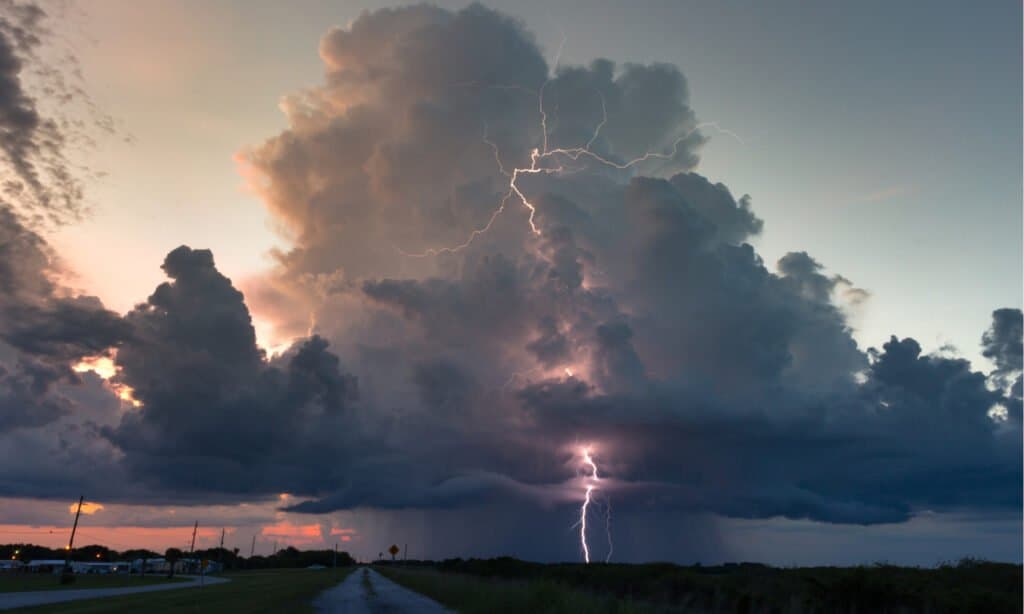
Romans thought Jupiter was the god of the sky and storms. Everyplace lightning struck belonged to him.
©Jeff Gammons StormVisuals/Shutterstock.com
What Do We Know About Jupiter Today?
Since ancient times, our knowledge of the planet Jupiter has grown by leaps and bounds. Here are some of the most interesting things modern astronomers have discovered by observing the planet with telescopes and space probes:
- Size – Jupiter is big enough for 1,300 Earths to fit inside.
- Rings – It has a thin ring system made of dust, rocks, and ice.
- Moons – It has almost 100 moons, four of which can be seen from Earth by amateurs with a telescope.
- Great Red Spot – Jupiter has a 350-year-old hurricane that is 10,000 miles across.
- Composition – It has a rocky core, a layer of metallic hydrogen, an ocean of liquid hydrogen, and a thick atmosphere of hydrogen, helium, ammonia, and water.
- Color – Because of the chemicals in its atmosphere, Jupiter’s natural colors are brown, orange, red, and white.
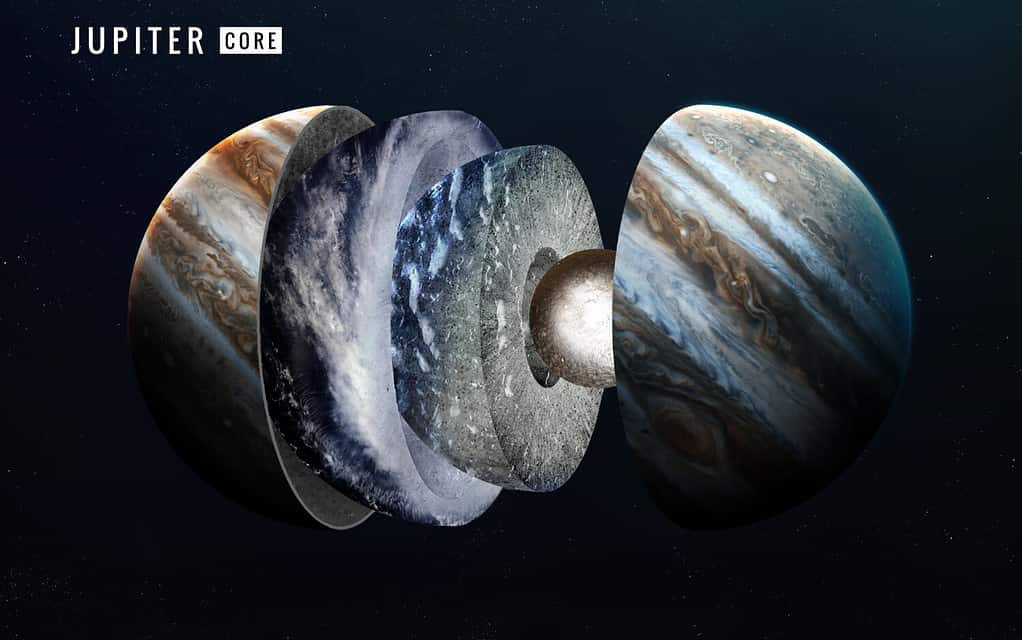
The planet Jupiter has four different layers that are formed under enormous pressure.
©Vadim Sadovski/Shutterstock.com
How Does Jupiter Protect Earth?
Another way the planet Jupiter is similar to the Roman deity is because it has a protective role for the Earth and other inner planets. How so? After the formation of the solar system, a great many asteroids and comets remained and at times crash into planets. We can see from looking at the craters on our Moon just how extensive and violent such collisions have been in the past. However, there would be even more of them if it were not for Jupiter and the other giant planets, Saturn, Uranus, and Neptune. These planets are so big, they have an enormous gravitational pull. They attract rogue objects traveling through the solar system to themselves where some of them are captured and become moons or parts of rings, and others crash into the planet and burn up in its atmosphere.
One of the most spectacular events ever witnessed in the solar system happened in 1994 when a comet named Shoemaker-Levy 9 was captured by Jupiter’s gravity and splintered into about two dozen pieces. They crashed into the planet’s southern hemisphere on the far side of the planet, but astronomers were able to photograph the bright flashes of the colossal explosions on Jupiter’s horizon. As the planet turned, a string of gigantic black spots was visible in the planet’s atmosphere that gradually dissipated. The biggest explosion was estimated at 48,000 megatons. That’s a thousand times more powerful than the Tsar Bomba, the largest nuclear weapon ever tested on Earth.
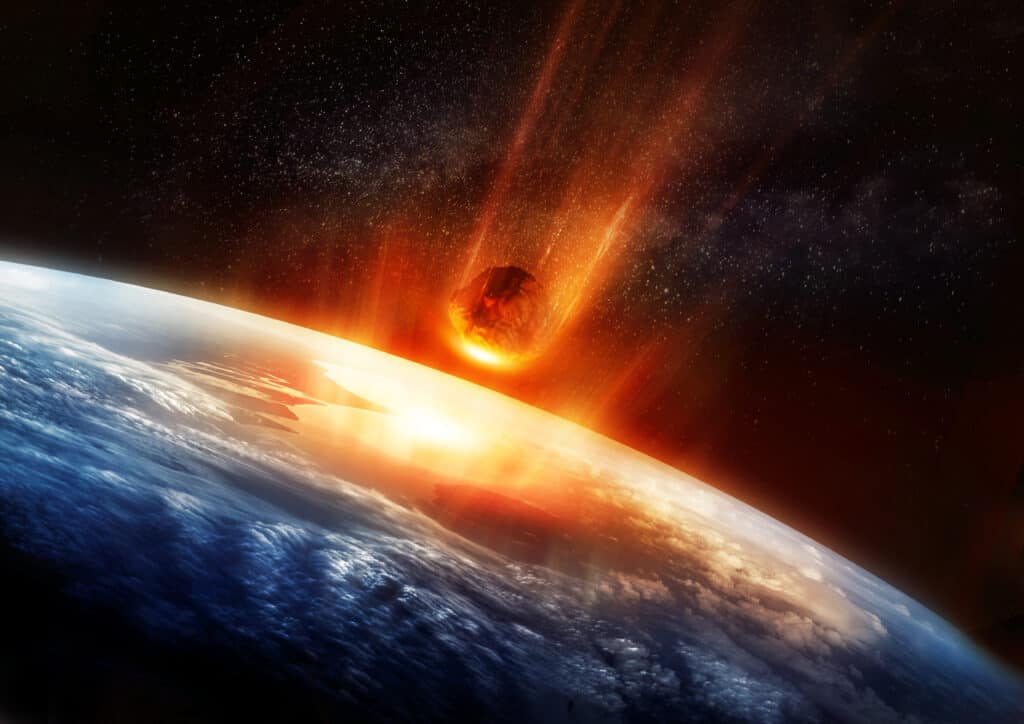
The Earth would be in danger of many more cosmic impacts without the help of Jupiter in destroying space debris.
©solarseven/Shutterstock.com
Can Jupiter Sustain Life?
The kind of life we know on Earth could not survive Jupiter’s atmosphere, crushing pressure, violent weather, and supersized gravity. Astronomers believe some of Jupiter’s moons could possibly harbor life, or may have done so in the past. So a big priority now that the outer planets have been studied extensively is to do more in-depth explorations of their moons. These could potentially be sites of human colonies in the distant future. So, like the home of the god Jupiter, the largest of the planets is off-limits to people. At least for now.
The photo featured at the top of this post is © iStock.com/Cobalt88
Thank you for reading! Have some feedback for us? Contact the AZ Animals editorial team.







